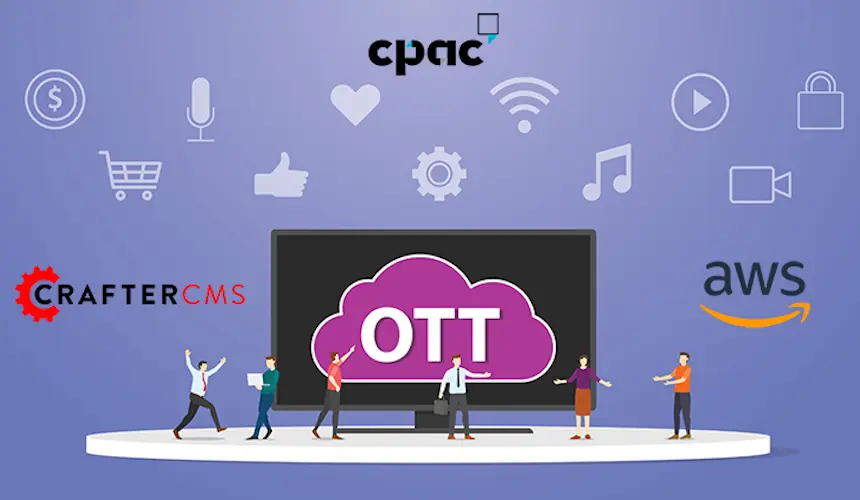A White Label Headless CMS For Agencies

Amanda Lee

Web development agencies have been the go-to resources for several companies that want to launch a sleekly designed and engaging website or digital app. Over the last decade, many agencies have created websites and content applications using tools like WordPress or Drupal. More recently, others have tools such as Webflow and other simple CMS solutions.
But is there another option?
An enterprise-grade, white label headless CMS offers a better alternative for agencies that want to deliver a customizable experience, and help companies of all sizes avoid the security, scalability, and performance challenges of working with simple solutions.
In this article, we’ll explore what makes a headless CMS perfect for digital agencies and highlight how CrafterCMS, in particular, offers the right amount of customizability and functionality to meet modern agency and customer needs.
What Is a Headless CMS (And What Makes it Different From Traditional Agency CMSs)?
A headless CMS is a content management system with only a backend repository for storing and managing content; hence, the term ‘headless’ is used as there is no frontend display or ‘head’.
Instead, the backend of the headless CMS is connected to different frontends using APIs. This allows a headless CMS to deliver content to not just a website like traditional CMSs such as WordPress, Drupal, etc., but also other channels such as a smartphone, smart TV, AR glasses, digital signage, or any other channel.
How Headless Architecture Benefits Agencies
Agencies can realize a number of benefits by working with a headless CMS instead of a traditional CMS.
Omnichannel Content Delivery: Content can be delivered not only to a website but also to mobile apps, digital signage, ecommerce shops and social channels. Agencies and their customers can build an omnichannel experience for customers that connects various touchpoints.
Modern Tooling: With a headless CMS, developers can select the modern tools and frameworks they want to use to build apps, including React, Next.js, and any JavaScript frontend framework.
Design Flexibility: Along with modern frameworks, a headless CMS doesn’t rely on a templated design like traditional CMSs like WordPress or Drupal. Agencies have more flexibility in designing unique experiences for each client.
Security: By delivering content through APIs, a headless CMS reduces the attack surface for DDoS attacks that plague platforms like WordPress. Agencies can also integrate additional security measures like authentication, encryption, and role-based access controls, ensuring that content is protected.
Why Some Agencies Shy Away From Going Headless
Although headless CMSs can provide several benefits, digital agencies and their customers have tended to avoid going headless in favor of traditional CMSs and page builders. There are at least three primary reasons for this:
1. Poor Authoring User Experience
Many simple headless CMSs lack a user-friendly interface for content authors. This makes it difficult for content teams and startups to perform content edits and changes without developer intervention, and they become even more dependent on agencies for support.
2. Hidden Costs
Another problem with simple headless CMSs is that they often come with a variety of hidden costs. Whereas page builders and traditional CMSs may provide a simple pricing structure that is easy for customers to understand, some headless CMS platforms vary pricing for a number of factors.
Cost and pricing models based on user licenses, number of websites, content assets and API calls, along with a host of other factors can all increase the price surprisingly high. For agencies that provide a full-service option for clients, including hosting and managing website infrastructure, these costs can grow exponentially.
Read More: Hidden Costs of a Pure Headless CMS
3. Proprietary and Closed Source
Most headless CMSs are sold only with proprietary and closed source license agreements; even worse, many are only available as public shared SaaS offerings. However, agencies often shy away from proprietary, closed-source CMSs and SaaS-only systems because they limit flexibility, customization, and control over the development process.
With a closed-source CMS, agencies are dependent on the vendor for updates, bug fixes and security patches, and new features, which can slow down their ability to innovate or address client-specific needs. Open-source alternatives provide greater freedom to tailor solutions, integrate with other platforms, and access a broader community of developers, which is essential for agencies working with diverse clients and evolving technology requirements.
What Makes CrafterCMS Perfect For Agencies
CrafterCMS is an enterprise-grade headless CMS perfect for building scalable, high-performance, and ultra-secure websites and apps. It is also the ideal solution for agencies that want to provide a better experience to their clients, whether they are startups or medium—to large-sized enterprises.
Best-in-Class Author and Developer Capabilities
CrafterCMS offers best-in-class functionality for both content authors and developers. Content authors can leverage user-friendly features, including drag-and-drop and WYSIWYG editing, in-context previews, and more. Meanwhile, developers can choose from a variety of frontend JavaScript frameworks and backend frameworks such as Spring, Groovy and Nodejs to create the best experience for their customers.
Multitenancy
CrafterCMS offers a multi-tenant architecture with a single software instance capable of simultaneously serving multiple web projects, sites, and apps. This is perfect for agencies that handle content requirements for multiple clients and allows them to manage as many clients and apps as they need.
Composability
CrafterCMS is a composable content platform, meaning that agencies and their customers can select and integrate components that align with their specific goals to serve different use cases, industries, or projects. These components can be different software solutions integrated via CrafterCMS’s REST APIs, GraphQL and/or SDKs, or third-party integrations found in the Crafter Marketplace.
Customizability is important for agencies that work with different clients as it allows them to provide each customer a unique experience and website. With CrafterCMS, both the authoring experience (Crafter Studio) and the end-user experience can be customized to meet a wide variety of requirements and use cases.
White Labeling
For agencies that want to use their own branding while providing their clients with access to the CMS, CrafterCMS offers a white labeling option for Crafter Studio. Using this option, agencies can change the user interface and user experience within Studio. This allows them to not only give access to clients but also create their own internal branding for their own users.
Self-Hosted and SaaS Options
Agencies love CrafterCMS because it offers the flexibility of both self-hosted and SaaS deployment models, catering to a wide range of client needs. With CrafterCMS Enterprise (the self-hosted option), agencies gain full control over the infrastructure, allowing for deep customization, security management, and integration with existing systems. This is especially valuable for clients with specific regulatory or performance requirements.
On the other hand, Crafter Cloud (CrafterCMS's SaaS offering) provides a hassle-free, scalable solution that reduces the burden of infrastructure management, freeing agencies to focus on creative and strategic aspects of the project. The ability to choose between these two models makes CrafterCMS a versatile choice for agencies looking to balance control, customization, and convenience.
Open Source Platform
CrafterCMS provides agencies with a robust and flexible platform with important distinguishing characteristics, including its open source licensing model, headless and decoupled architecture, Git-based content repository, and cloud-nativeness. These factors ensure improved scalability, flexibility, and productivity for CMS users.
Learn More
Wondering what else CrafterCMS has to offer agencies? See how one of our partners leverages CrafterCMS in this recorded CrafterCMS Live 2024! session: Building Dynamic Web Experiences with CrafterCMS and Next.js.
Related Posts

Websites Are Dead?

Mike Vertal

No-Code Experience Building for Marketers & Designers

Amanda Lee

The Future of Web Experiences: From Browsing and Searching to Conversational AI

Mike Vertal

Is Your CMS MACH-Ready? A Practical Guide for Enterprise Architects

Sara Williams
Related Resources
-

CrafterCMS at eBay: The Universal Content Platform for eBay.com
Webcast
-

Personalized Digital Experiences for a Cruise Liner
Webcast
-

Introducing CrafterCMS v4.0
Webcast
-

Modernizing Video Delivery and Content Management at CPAC, A Canadian Nationwide Broadcaster
Webcast
-

Building React Apps on a Headless CMS
White Paper





